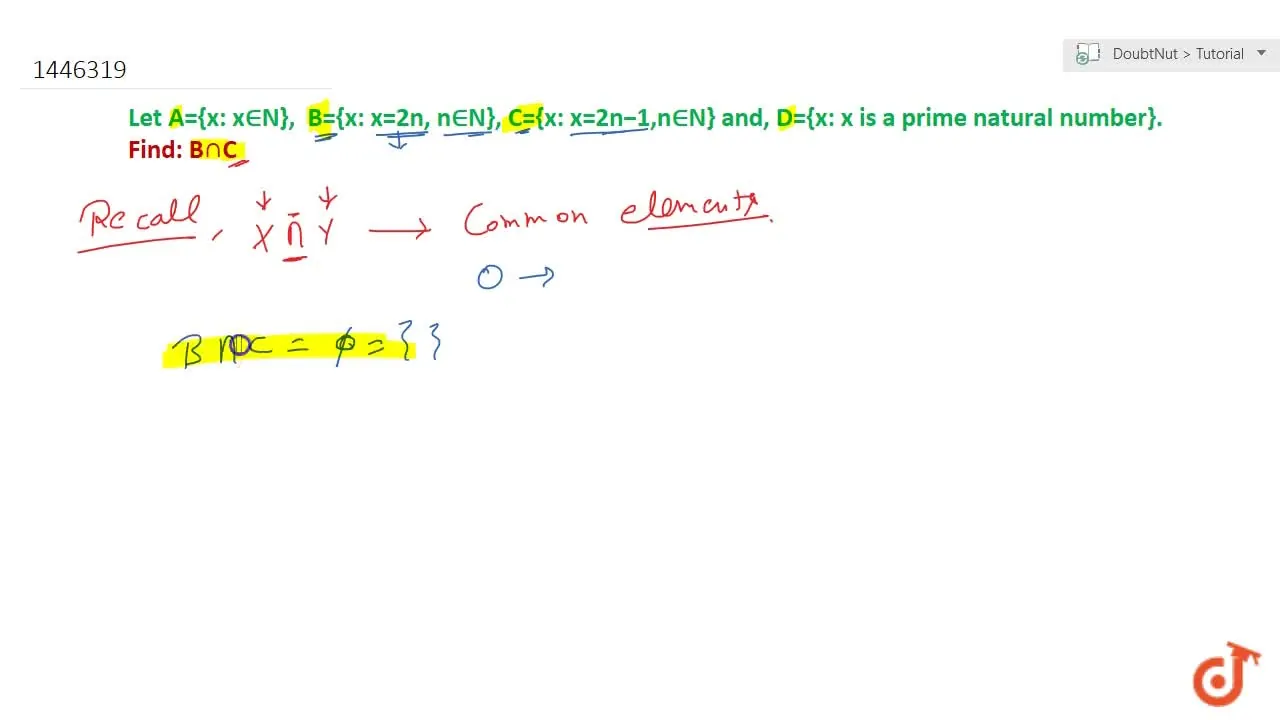Let A={x:x∈N}, B={x;x=2n, n∈N}, C={x:x=2n−1,n∈N}and, D={x:x is a prime natural number} . Find: B∩C
We have given A={x:x∈N}, B={x;x2n, n∈N}, C={x:x=2n−1,n∈N}and, D={x:x
is a prime natural number}
Now we can write A={x:x∈N}={1,2,3,4.....}
Similarly, B={x;x2n, n∈N}={2,4,6,8,10....},
C={x:x=2n−1,n∈N}={1,3,5,7,9.......}
a n d
D={x:x
is a prime natural number}={2,3,5,7,11,13....}
Then the intersection of two sets is the largest set that contains all the elements that are common to both the sets.
Hence B∩C={2,4,6,8,10...}∩{1,3,5,7,9........}={ϕ}
B∩C=ϕ As the set B is even number set and set C is odd number set hence no natural number can be even and odd both at same time
Hence B∩C=ϕ.
Related Playlists
Similar Questions
Let A={x:x∈N}, B={x;x2n, n∈N}, C={x:x=2n−1,n∈N}and, D={x:x is a prime natural number} . Find: A∩D
View SolutionLet A={x:x∈N}, B={x;x2n, n∈N}, C={x:x=2n−1,n∈N}and, D={x:x is a prime natural number} . Find: A∩C
View SolutionLet A={x:x∈N}, B={x;x2n, n∈N}, C={x:x=2n−1,n∈N}and, D={x:x is a prime natural number} . Find: A∩B
View SolutionLet A={x:x∈N}, B={x;x=2n, n∈N}, C={x:x=2n−1,n∈N}and, D={x:x is a prime natural number} . Find: C∩D
View SolutionLet A={x:x∈N}, B={x;x2n, n∈N}, C={x:x=2n−1,n∈N}and, D={x:x is a prime natural number} . Find: B∩D
View SolutionLet A={x:x∈N}, B={x;x=2n, n∈N}, C={x:x=2n−1,n∈N}and, D={x:x is a prime natural number} . Find: B∩C
View SolutionIf A={x:x=n,n∈N}, B={x:=2n,n∈N}, c={x:x=4n,n∈N}, then
View SolutionD = {x:x=2n-1 < 20 and n ∈N }
View SolutionIf A={x:x =2n , n∈N} and B = { x:x=2n-1, n∈N}, then (A∩B)' is
View SolutionLet A={x:x=6n,n∈N}andB={x:x=9n,n∈N}, find A∩B.
View Solution


